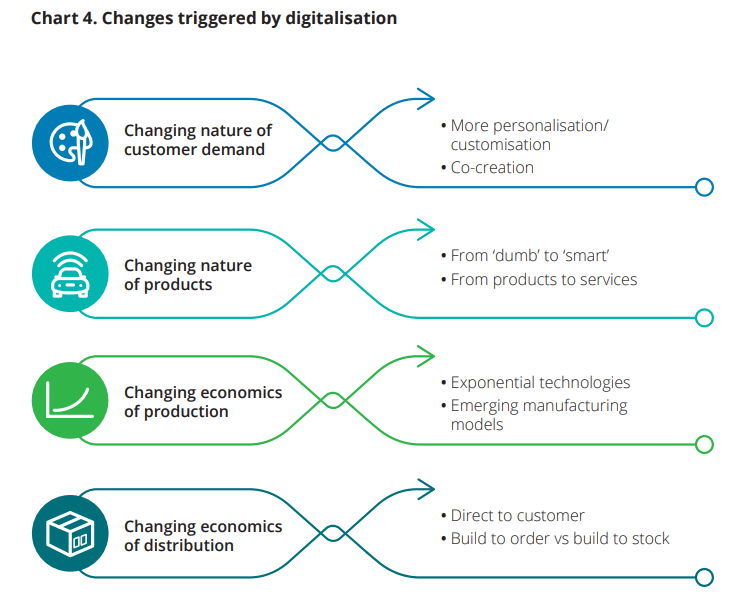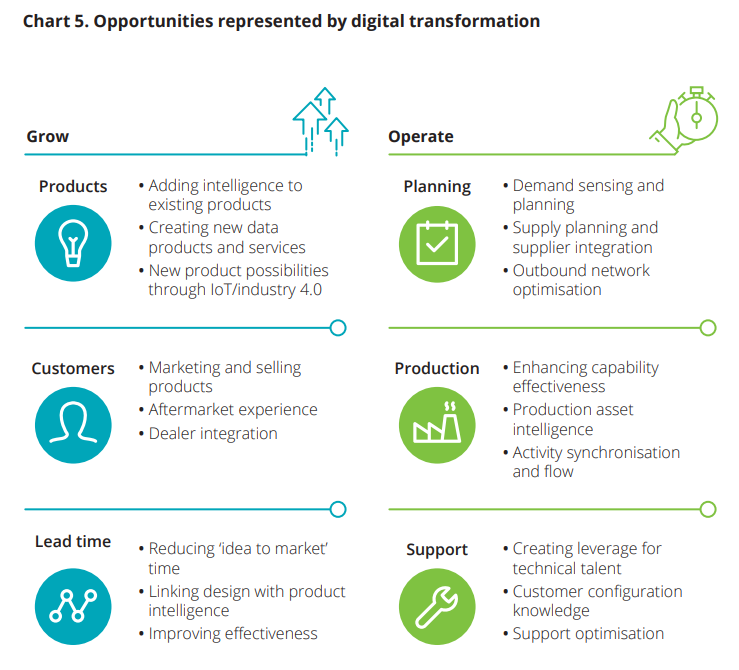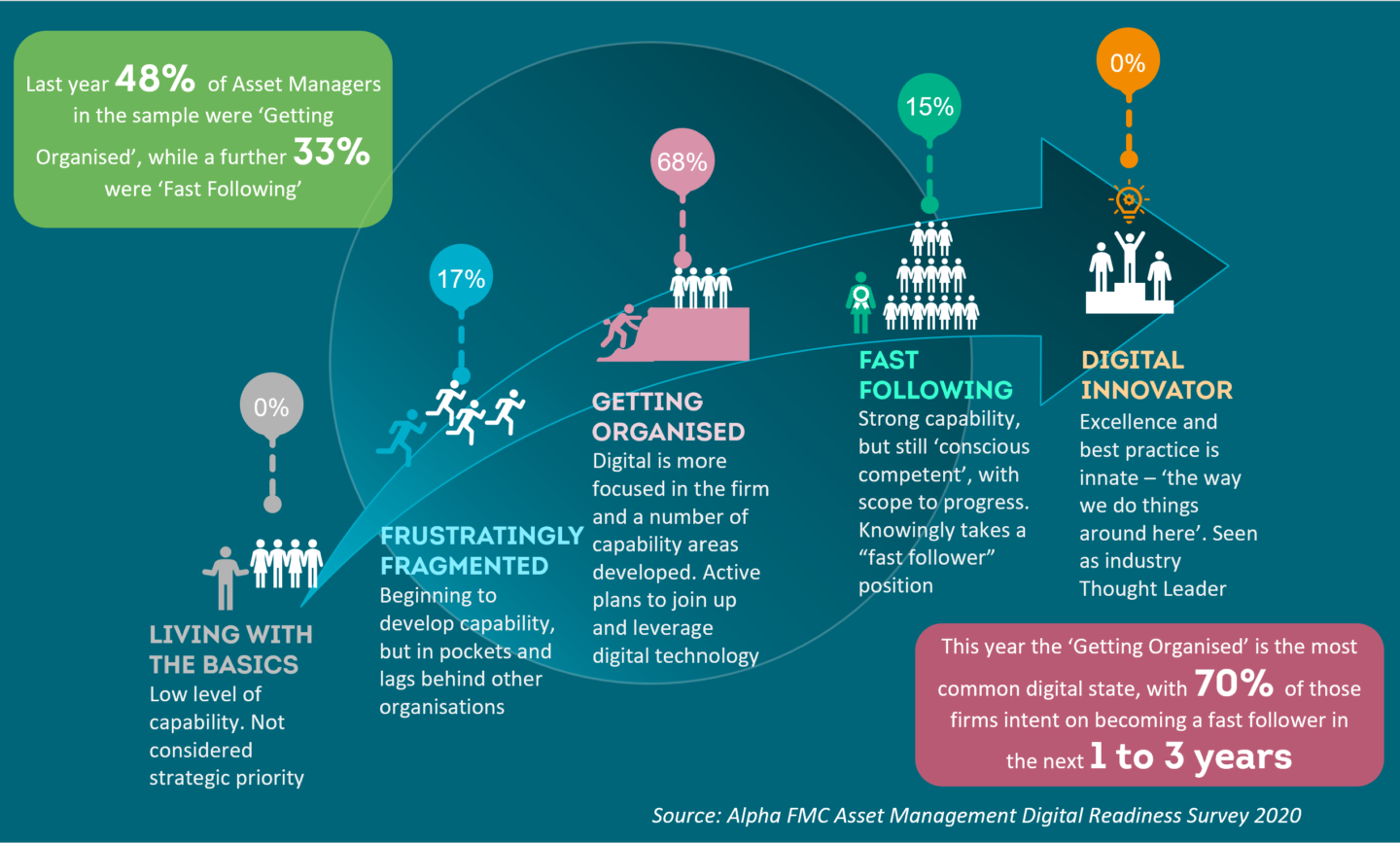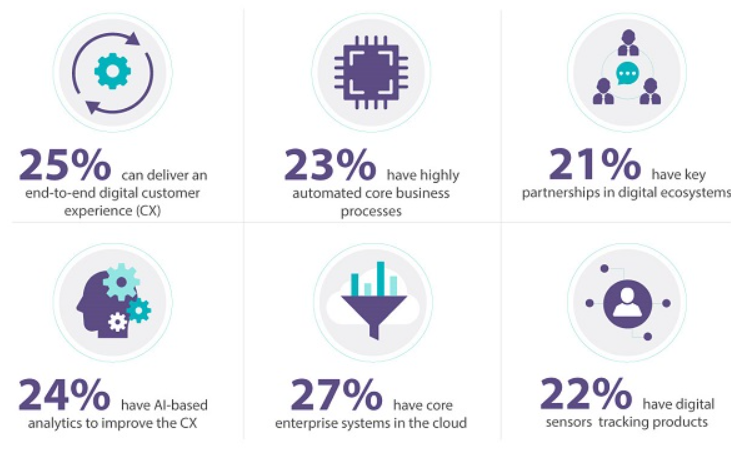The term ‘digital readiness’ means assessing a one's activities, processes and competencies in terms of their compatibility to a digital environment - also analysing how ready the organisation is to fully leverage the opportunities and changes brought about by technology and their societal impact in such a strategic manner that it reaps benefits in the present and the future.
The pandemic-driven digital transformation is happening everywhere. With the world turning away from physical contact both to adapt better to newer technologies and to tackle the pandemic, things look like they will seemingly remain the same even post these apocalyptic times. In such a scenario, having the digital infrastructure is like a safety net to tackle these unprecedented times. Hence digital readiness in businesses tracks how ready the employees of an organisation are to adapt to new softwares, technologies, processes etc that enable 'going digital'.
The significance of being digitally ‘ready’

As listed by Deloitte, digitisation remains a key factor in bringing about change in the core components of the company's ecosystem due to several reasons.
- Digitisation enables the introduction of smart products and a wider range of services in the company, thus substantially expanding the scope and business opportunities of the organisation.
- Being virtually proactive helps one remain up-to-date with the present scenarios and trends. As an organisation, a defence mechanism also needs to be cultivated within the employees to face an uncertain and constantly changing future.
- Being digitally ready also prepares a company to remotely manage their infrastructure, in case there is a need to. As it is, COVID-19 has transformed the business models of companies throughout the globe with more and more shifts to cloud and virtual environments. Throughout industries and sectors, even the consumers expect an online presence - not in place of, but complementary to human interaction.
- Gaining competitive advantage is also a big plus point of an enterprise that is digitally forward. An accessible and interactive digital platform forms one facet of digital marketing, and holds the key to generating the numbers if used in the optimum way.
Thus, a digitised enterprise remains future ready with both its resources and its infrastructure. Although digitisation may seem like a bulky task, there are multiple positive growth factors that are catalysed by it, such as the ones listed below.

The digital readiness checklist
Damien Martin, Co-founder of Shufti Pro says,“digital readiness begins at a personal level and then ties itself into the work culture. The faster employees can adopt technology in their personal lives, the easier they find it to apply the same skills at work. We believe strongly in strengthening the current employee force and building their skills, as opposed to replacing digital novices to fill in the gaps”.
Digital readiness is a step by step process.
→ The first step in the process is digitisation. It is the process of converting information from a physical format to a virtual one.
→ After digitisation is complete, digitalization of the resources will define the process in which digitisation will be used in the future to strengthen the business' components.
→ The last step and perhaps the most important would be digital transformation. This would imply accelerating the transformation of the business' activities, processes and operations to cloud based virtual frameworks. Natural transformation takes place in accordance with the digital environment prevalent at the time - for example, if the world is surrounded with social media, smart devices, fast internet and artificial intelligence, an organisation's conduct of business is highly influenced by it.
Once the basics of being digitally proficient are covered, let's move on to the appropriate approach for digitising your workforce.
Strategising
The strategy for the digital transformation journey would consist of a map of your transformation journey, and would also list down the final destination that you are looking to achieve. Also include your objective, your means of achieving the objective, and the context of the same - leaving no question marks.
Assessment
For any change to take place, the current situation has to be analysed in a proper manner to assess exactly what the problem areas are. While Bain & Company has come up with a digital readiness assessment test in a survey format to facilitate the process of companies trying to examine how updated they are, this is how FOSTEC & Company recommends enterprises to assess their digital readiness.

The path to becoming digitally ready initiates by adapting to the mentality of assessment, adaptation and improvisation. Now that the assessment part is over, comes the phase where the organisation braces itself for the upcoming change.
Creating a Competency Framework
When undergoing digital transformation, the new competency framework so created needs to be examined from a farsighted angle. Since the catalyzing factor of being digitally ready is to catch up on the trends and future proof one's business, it is important to keep in mind all the upcoming roles and competencies that the employees would need to be equipped with to stay in line with the evolving technological advancements. In order to fully embrace what the digital world has to offer, an enterprise also needs to lay the foundation for filling up any skill gaps within the organisation and initiating required training or development programmes as needed.
Going down to the grassroots
Multiple people in your organisation are on different levels of proficiency when it comes to being digitally ready. It is the duty of the company to analyse each individual and then share resources that bring about the needed organisational equity.
Measuring the ROI
The path to digital readiness is a long term plan with a process that demands time, will and investment. It is essential to create a roadmap that points out the significant milestones that the organisation will achieve after the process has culminated. While the journey can be a bit uncertain and tumultuous; a clear, calculated ROI (Return on Investment) will keep the spirits high and the workforce motivated.
As the need for being digitally ready has been soaring in recent times due to the pandemic, survey results show that companies are gearing up to undertake the journey. In the Alpha FMC Asset Management Digital Readiness Survey 2020, a large number of companies reported that they were pulling their socks up in the pursuit of digitisation.

This is in stark contrast to the situation before the pandemic, as highlighted by the TCS COVID-19 Business Impact survey, which reported the several levels of digital readiness of businesses when COVID-19 set in. This is how the around 300 surveyed companies fared with respect to the 'six essential digital capabilities' as defined by TCS.

Clearly, we have come a long way.
During these times, the companies that stayed afloat despite the world order going haywire were the ones that already had the digital infrastructure to cope with a situation where physical contact was forbidden for months. For example, Amazon’s revenue soared due to being well positioned and accessible from a remote environment, partially also due to the incompetence of its competitors and subsequent lack of other alternatives for the consumer to choose from.
Coronavirus also accelerated responses to digital transformation, with Levi Strauss demonstrating a successful digital scale up swiftly in response to COVID-19. This is what Brady Stewart, Vice President of Levi Strauss had to say about the company adapting to the virus.
“When this initially began, we were simultaneously grasping the severity of the disease while creating a playbook on how to assess and close stores. We were also expediting our existing omnichannel initiatives and even launching new ones, like buy online, pick up in store, ship from store, curbside pick-up, same-day delivery, virtual stylist appointments and line management tools. Now we are leaning into these omnichannel capabilities. They allow us to keep our business running and our employees safe and able to work, and allow our consumers to access our brand where and how they want to shop during these unprecedented times.”
Potential Bottlenecks
Having covered all the productive aspects of the idea, let’s also examine some issues that could prove to be potential bottlenecks in the future.
- The first and the most obvious challenge in the scenario is the inability of organisations to unlock appropriate business value with adopting new and emerging technologies, and scaling the right tech choices. Another related challenge is understanding the impact of the technology choices on your present team, your end users and also on your upcoming decisions. Combine that with building a view that works for both the present and future, it becomes quite a daunting task.
- Building resilience is not an instantaneous process. The ability to tackle, adapt and consequently improvise for change is extremely important and borderline difficult when it comes to changing the course of entire businesses. It is something that you cultivate over the years, and is more of a thought associated with the brand image of an enterprise to be elastic, flexible and proactively responsive. It therefore can be a bottleneck to approach such a monumental change in a controlled and holistic manner.
- Another significant bottleneck could be lack of appropriate investment in existing resources, thereby resulting in outdated technology that demands heavy duty to upgrade. If a company has not invested regularly in updating their systems, the technological debt could pile up so high that trying to figure out a kickstart would lead to opening a can of worms - leading to increased investments and resource allocation in multiple areas rather than one to finally be able to achieve the digital readiness that they've been hoping for.
Here’s everything you will need to know on how the businesses reimagined themselves during pandemic.
Conclusion
The initiation of digital readiness initiatives is a rather inevitable task that every enterprise is facing today. Propelled by the demands of the present times, it is better for organisations to start sowing the seeds of digitisation as early as possible, only in order to reap the benefits sooner.
Subscribe
Related Blogs
Trek n Tech Annual Retreat 2025: A 7-Day Workcation of OSL

OSL family came together for the Trek n Tech Annual Retreat 2025, a 7-day workcation set amidst the serene beauty of…
Exploring Drupal's Single Directory Components: A Game-Changer for Developers

Web development thrives on efficiency and organisation, and Drupal, our favourite CMS, is here to amp that up with its…
7 Quick Steps to Create API Documentation Using Postman

If you work with API , you are likely already familiar with Postman, the beloved REST Client trusted by countless…




